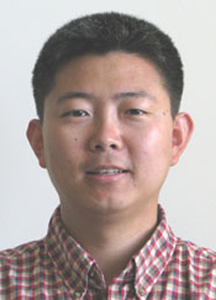Program Information
Improvement of Optical CT Scanner for 3-D Dosimetry
X Qian1*, J Admovics2, C Wuu3, (1) Columbia University, New York, NY, (2) Rider University, Lawrenceville, NJ, (3) Columbia University, New York, NY
SU-E-T-68 Sunday 3:00PM - 6:00PM Room: Exhibit HallPurpose: The first generation 3D optical CT scanner OCTOPUS has been modified. The modified scanner has a new developed user control panel written in Labview which provides more flexibility to optimize mechanical control and data acquisition technique. The total scan time has been significantly reduced from initial 10 hours to ~ 4 hours.
Methods:The modified scanner is developed from OCTOPUS by adding a 50/50 beam splitter, 4 broadband (400-750nm) dielectric mirrors and an identical photodetector as the original one. A 25mm diameter filter with central wavelength 630nm is attached to each of the photodetectors to remove ambient light. The laser source is HeNe Laser with wavelength 632.8 nm. All these optical components are aligned well and mounted on a single movable frame. The frame can move vertically along the water tank to allow laser beam covering the whole dosimeter. To test the modified scanner, the sinogram of a homemade phantom with two plastic rods (7 mm diameter) has been generated by combining two sets of projection data acquired from perpendicular photodetectors. We also studied a single field irradiation (4cm x 4cm) generated from a linear accelerator with 6 MV x-ray beam using an 11cm diameter and 8 cm height PRESAGE dosimeter.
Results:The sinogram shows that the combined data from two photodetectors match well. By setting the same window/level value using ImageJ, the optical density of irradiated square field obtained using the modified scanner shows comparable contrast, sharpness and uniformity as OCTPUS. Isodose distribution among OCTOPUS, the modified scanner and Eclipse plan agree well at the 90%, 75%, 50% isodose lines.
Conclusion:By comparing results obtained using the modified scanner and OCTOPUS, we have evaluated that the modified scanner can achieve comparable dose reconstruction quality as OCTOPUS while reducing total scan and reconstruction time to ~4 hours.
Contact Email:


